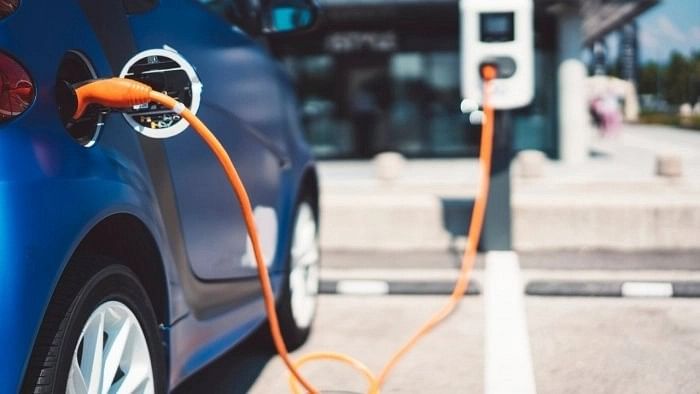
Representative image of an Electronic Vehicle.
Credit: iStock Photo
On a daily basis, one alarming report after another warns us of the extreme heat conditions that the world is going through. The India Meteorological Department (IMD) has issued heat wave warnings for several Indian states during the April–June period.
Bengaluru recorded high temperatures in April, with the mercury hovering around 38 degrees Celsius. If the option was to escape to the hills, the situation is equally bad there; for instance, Ooty recorded its highest temperature at 29 degrees Celsius a couple of weeks ago. India has seen the warmest decade, with mean temperatures rising by 0.15 degrees Celsius each decade since 1950.
The Indian Institute of Tropical Meteorology (IITM) informed us that the Indian Ocean had become warmer by 1.2 degrees Celsius from 1950 to 2020, and it is only expected to heat up more in the future to 1.7 to 3.8 degrees until 2100. The study was led by climate scientist Roxy Mathew Koll, who warned, “The future increase in heat content is comparable to adding the energy equivalent of one Hiroshima atomic bomb detonation every second, all day, every day, for a decade.”
The Indian Ocean is surrounded by 40 countries, home to a third of the world’s population.
Blame it on El Nino conditions, which is the warming of surface waters in the Pacific Ocean, leading to weaker monsoon winds and drier conditions, or blame it on human-induced warming of the earth, but this is the second year in succession that the world is facing such heat; last year was 1.48 degrees Celsius warmer than the pre-industrial average.
The increased energy levels in the earth’s atmosphere make it heat up; the burning of fossil fuels increases greenhouse gases, more so carbon dioxide, in the atmosphere; add to that the rising sea surface temperatures, the melting glaciers, and the low ice cover in the Antarctic; and they make a deadly combination.
The extreme heat wave will put pressure on the already stressed power grids and make the water crisis worse. The heat wave will also bring its attendant risks to health, as heat strokes can often be fatal.
However, what is reassuring are the strides the world has taken in the renewable energy sector to help transition to sustainable energy solutions.
According to the International Energy Agency (IEA), the world is on course to increase renewable capacity in the next five years, and almost 3700 GW of new renewable capacity will come online over the 2023–2028 period, driven by supportive policies in more than 130 countries.
India’s own renewables capacity has shown an increase of 30.1 per cent in 2023, up from 27.5 per cent in 2022, according to a recent report from the Energy and Resources Institute (TERI). The top states are Rajasthan, Gujarat, Tamil Nadu, Karnataka, and Maharashtra. India is considered to be fourth in its renewable energy capacity after China, the US, and Brazil.
The 118 countries’ renewable energy pledge at the recent COP28 climate summit was to triple the world’s green energy capacity to 11,000 GW by 2030 and reduce our reliance on fossil fuels. Can we reach this target? It has to be seen.
Meanwhile, in another positive development, the IEA reports in its Global EV Outlook 2024 that “electric car sales keep rising and could reach around 17 million in 2024, accounting for more than one in five cars sold worldwide.”
While the sales of electric cars are concentrated in China, Europe, and the US, research shows that India has seen a growing market for EVs, from below 1per cent pre-pandemic to over 6per cent in 2023.
A lot more of this is in the two-wheeler and e-rickshaw segments than in the four-wheeler segment. Supported by government subsidies and consumer preference, India might be within striking distance of meeting its target of 30 per cent EV market share by 2030.
EVs not only reduce greenhouse gas emissions but also other pollutants such as particulate matter, nitrogen oxides, and black carbon.
At COP 21, parties to the UNFCCC agreed to combat climate change by keeping the global temperature rise to well below 2 degrees Celsius above pre-industrial levels while making serious efforts to limit the temperature rise to 1.5 degrees Celsius. To make this possible, continued action is imperative.
(The writer is a journalist and author)